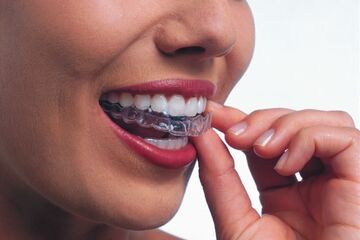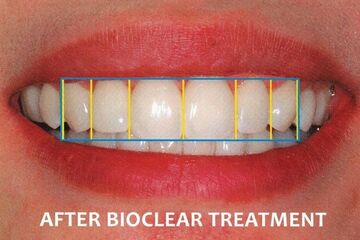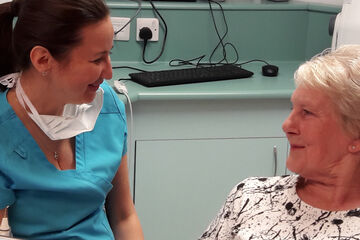We’ve never had it so good. Honestly. Take a look at the evolution of orthodontics over the years.

Even as late as the 1960's wearing orthodontic braces was a pretty grim experience. Despite braces having been around for well over 200 years, they remained bulky, uncomfortable and time consuming to fit. This was due in part to the fact that metal bands needed to be wrapped around each individual tooth in order to move them into position.
As you can imagine braces of the time used a lot of metal and the emphasis at that stage was on aiding tooth movement rather than on discretion. Needless to say, calls of 'metal mouth' and 'brace face' were commonplace amongst kids who had to endure them.
The orthodontic revolution had started
By the 1970's however a mini-orthodontic revolution was starting to take place. I say 'mini' because in terms of how braces look today, they were still a million miles away. Nevertheless things were moving in the right direction.
Direct bonding now became the norm as stainless steel brackets could be glued directly to the teeth using a special dental adhesive. This meant that bulky unsightly wires were soon ditched in favour of braces that on first impressions, were far less obvious than their predecessors. That is until the wearer smiled or spoke.
Sure the wearer no longer had to endure an ugly series of wires, but there remained the obvious signs of glinting metal as a smile caught the sun. But in 1976 that all changed with the invention of Lingual Braces. These devices could be bonded to the back of the teeth rather than the front and meant that for the first time, the wearer had a true cosmetic alternative.
Discretion and functionality!
Lingual braces remained the only discreet orthodontic treatment of choice right until the mid 1980's when tooth-coloured aesthetic braces started to be manufactured. Initially they were expensive because they were made from 'new-fangled' materials such as toughened acrylic or polycarbonate. But they were lighter, more comfortable, and just as strong as metal and after a few short years, they became standard. Now people had a say not only in how they straightened their teeth, but also in how discreet the process needed to be.
Freeing the Shackles

While the pace of change was rapid in a few short years, let's not forget that even at this stage, orthodontic treatment still involved the patient having to wear a series of brackets and wires (albeit discreet brackets and wires) glued directly onto the teeth. Braces were fitted permanently until the end of the treatment (some 12-18 months down the line) when they could at last be removed. For the many who wore them, they became almost like a dear old friend. You know the type I mean .... annoying at times, but ultimately, you'd been through a lot together.
However in 1999, a year before the new Millennium, a completely different type of treatment was made available to orthodontists that would revolutionise orthodontic treatment, and that was Invisalign.
The Invisalign system was far removed from any other orthodontic treatment that preceded it. So much so in fact that it was initially met with a great deal of scepticism. However after many patients and numerous glowing reports, Invisalign was no longer the young pretender. It became King!
Imagine an orthodontic treatment where
• No brackets and wires were present
• There was no need for adhesive and...
• A patient had total control over their treatment since each each aligner was designed to be fully and easily removable whenever necessary
Imagine an aligner that was.....
• Designed to be worn and discarded for a new one every two weeks; and was
• Virtually invisible too
Needless to say, Invisalign aligners became the holy grail of orthodontic discretion and remain so to this day.
So what's next for orthodontic braces?
It's an exciting time ahead with even more opportunities for orthodontists to marry functionality with both form and aesthetics. In addition, patients can expect treatments that are faster, more comfortable, and that can improve their health and well-being too.
To find out more about discreet orthodontic treatments and how they can help you restore your great looking smile, contact Measham Dental on 01530 272 264 and talk to Dr Ferreira and the team today.





